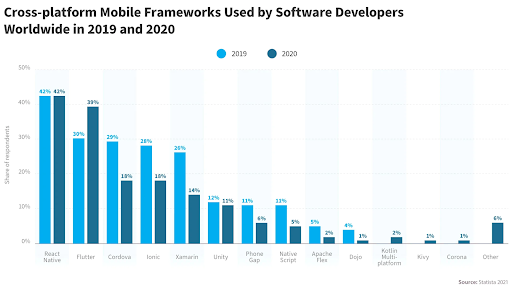Being a business owner, you’re passionate about your company, and you’re determined to see it succeed. To be a successful business owner, you must change your IT infrastructure. But when your current system needs to be updated and can’t meet the needs of your expanding business. It needs a solution that is scalable, cost-effective, and protected. You’ve heard about cloud computing, but you must determine if the solution is right.
Public, private, and hybrid cloud solutions have benefits and drawbacks. We’ll assist you in selecting the best cloud solution for your business requirements in this blog article.
The public cloud is the considerable standard type of cloud computing. It’s offered by large providers like AWS, Azure, and Google Cloud Platform. Public cloud is a good option for businesses that need a scalable and cost-effective solution.
A private cloud is a dedicated cloud environment for your business. Private clouds offer more control and security than public clouds, but they can also be more expensive and difficult to manage.
A hybrid cloud is a combination of public and private clouds. It allows you to keep your most sensitive data and applications in a private cloud environment while using public cloud resources for less sensitive workloads.
How to choose the right cloud solution for your business
The greatest method to choose is to consider into account Public, Private, and Hybrid Cloud Solutions in addition to your unique organization wants. The public cloud is a fantastic choice if you require a scalable and affordable solution. A private cloud is a preferable choice if you want additional control and security. If you need a balance between control, security, scalability, and cost-effectiveness, a hybrid cloud is a good option. A detailed explanation of these prime services:
Public Cloud
Cloud computing is most commonly used in public clouds. It is distributed via the Internet and shared with other businesses. Computing, storage, networking, databases, analytics, and machine learning are just a few services that public cloud companies provide.
Public cloud computing is a good option for businesses of all sizes, from start-ups to large enterprises. It is a cost-effective way to access computing resources and scale your IT infrastructure up or down as needed. Businesses that want global resource access might consider the public cloud a viable solution.
Some of the advantages of public cloud computing are:
- Cost-effectiveness: Pay-as-you-go cloud computing allows you to only pay for the resources you need.
- Scalability: You may quickly add or remove resources from the public cloud due to its great scalability.
- Reliability: Public cloud providers offer high availability and disaster recovery services.
- Security: Public cloud providers offer many security features to protect your data and applications.
Some of the challenges of the public cloud include the following:
- Control: You need more control over your data and applications in a public cloud environment.
- Vendor lock-in: Switching between public cloud providers might be challenging.
Private Cloud
A private cloud is a cloud environment that is exclusive to one business. Either an internal data center or a third-party data center can host it. Private clouds can be more costly and challenging to administer than public clouds, but they can provide greater control and security.
A private cloud is a good option for businesses that need more control over their data and applications or that have compliance or security requirements that cannot be met with a public cloud solution.
Some of the benefits of a private cloud:
- Control: Total control over your data and apps is what a private cloud environment offers you.
- Security: This cloud provides more security features than other clouds.
- Compliance: Following industrial laws can be facilitated by private clouds.
Challenges of the Private Cloud:
- Cost: The private cloud offers several benefits, but it’s way too expensive than other cloud providers.
- Complexity: With security, it’s more complicated to handle by a single person. It needs a team to work behind the scenes.
Hybrid Cloud
Combining private and public cloud infrastructures creates a hybrid cloud. With public cloud resources being used for less sensitive workloads, enterprises can store their most sensitive data and apps in a private cloud environment.
Businesses that want the cost-effectiveness and scalability of a public cloud combined with the management and security of a private cloud can consider a hybrid cloud.
Some of the benefits of hybrid cloud include:
- Control: Businesses can choose the level of control they need over their data and applications.
- Security: In a private cloud setting, companies may store their most sensitive information and applications.
- Scalability: Using public cloud services, businesses may scale up or down their resources as needed.
Challenges of hybrid cloud include:
- Complexity: Compared to public or private clouds, managing hybrid clouds might be more difficult.
- Security: Businesses must implement security measures to protect their data and applications in public and private cloud environments.
- Vendor lock-in: Switching between hybrid cloud solutions might be challenging.
Which kind of cloud computing is best for you?
The best way to choose a cloud solution is to consider your business needs. If you need a cost-effective and scalable solution, the public cloud is a good option. If you need more control and security, a private cloud is a better option. If you need a balance between control, security, scalability, and cost-effectiveness, a hybrid cloud is a good option.
For further guidance and assistance in selecting the right cloud services and solutions for your business, please feel free to connect with us. This is a brief overview of public, private, and hybrid clouds. There are many other factors to consider when choosing a cloud solution, such as your industry, compliance requirements, and budget.
In case you have found a mistake in the text, please send a message to the author by selecting the mistake and pressing Ctrl-Enter.






